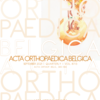Metal wear debris generation in primary total knee arthroplasty: is it an issue?
knee; prosthesis; arthroplasty; metal; adverse
effects
Published online: Feb 16 2022
Abstract
More durable total knee arthroplasties (TKAs) are needed, due to the rising life expectancy, the higher activity levels of patients and the growing concerns about aseptic loosening being caused by metal hypersensitivity. In response, different hypoallergenic metal coatings have been developed for TKAs. How- ever, possible adverse effects of these different metals (cobalt-chromium-molybdenum, zirconium, titanium and tantalum) have been neglected. The aim was to summarize the local and systemic adverse effects (including metal hypersensitivity), survival ratios, patient-reported outcome measures (PROMs) and the plasma metal ion concentrations of the different TKA coatings. A literature search on PubMed and EMBASE was performed. In total, 15 studies were found eligible. Common adverse effects of TKA were infection, loosening, pain, instability and hyper- coagulation disorders. Serious adverse effects related to TKA implants were not reported. The survival ratios and patient-reported outcome measures seem to confirm these good results. In contrast with chromium and cobalt, no significant differences were reported in the nickel, molybdenum and titanium concentrations. No significant differences between the hypoallergenic and standard TKA implants were found in terms of adverse effects, survival ratios and PROMs. A causal relationship between the common adverse effects and the different metals is unlikely. Due to the heterogeneity of the TKA implants used, no firm conclusions could be made. Further research with longer follow-up studies are needed to find possible adverse effects and differences. Thus far, the hypoallergenic implants seem to perform equal to the standard implants.
